It’s a dog-eat-dog world underwater, and a fish has to use every sensory organ to avoid danger and find food. In murky water and low light, sound becomes a fish’s most important sense. Fish sense sound in a variety of ways, including sensitive bones in their head and fine hairs on their lateral line. Because a fish is almost the same density as water, sound waves travel right through its body. In fact, sound moves more efficiently through water than it does through the air. While a shad splashing or a shrimp popping rings the dinner bell, an angler banging his kayak and splashing his paddle will send spooky fish swimming. So stay quiet with these stealthy fishing tips.
3 Tips to Keep Quiet While Kayak Fishing
1 Bongos Are for Beatniks
If you are banging into the kayak as you paddle, it’s time to polish your stroke. Sit up straight, keep your hands shoulder-width apart, and pivot with the bottom hand and push with the top hand. Most sit-on-top paddlers can get away with a 220-centimeter shaft, but anglers riding elevated seats may need a 240-centimeter or longer paddle. Turn, stop, reverse and spin silently, too. Practice making these strokes without splashing or knocking around. Some boat hulls are quieter than others. Before buying a kayak, test it in windy, wavy conditions for hull slap and scupper gurgle. It only takes one sour note to tune out the fish.
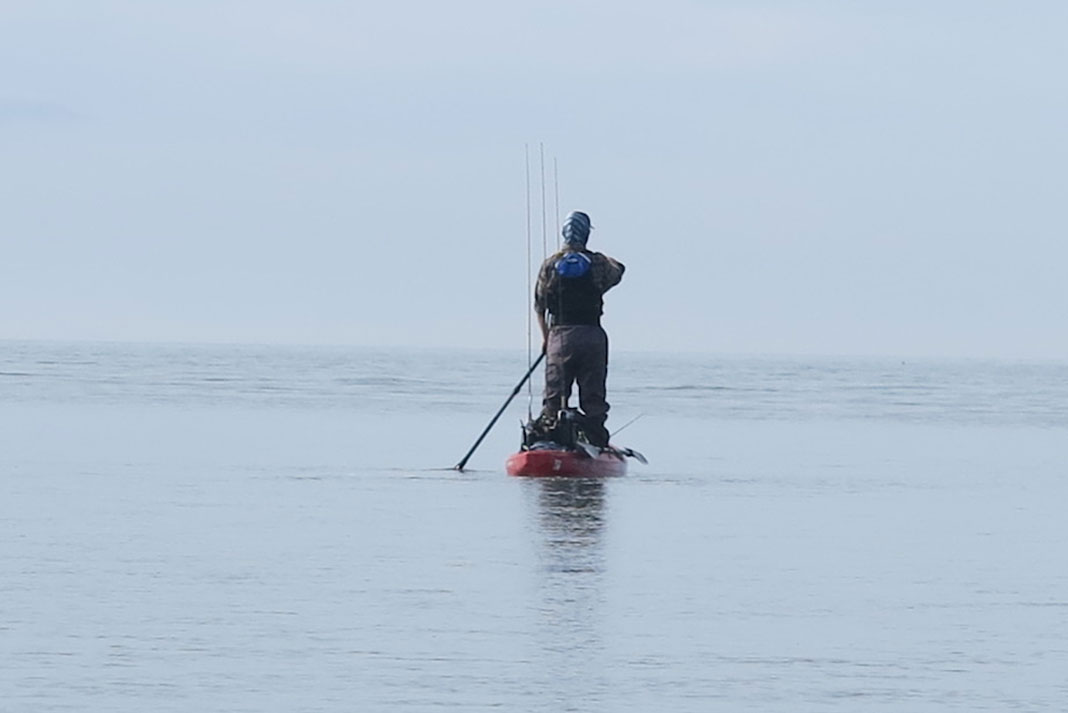
2 A Quiet Place
Paddle placement and storage are equally important for stealthy fish stalking. Before making a cast, silently set the paddle down. In a boat with raised seating, it’s easy to set the paddle in the crook of your lap perpendicular to the kayak. Not only does this keep the shaft of the paddle from banging the side of the boat, it also allows you to make minor steering adjustments with one hand.
In a kayak with recessed seating, setting the paddle perpendicular will cause the shaft to bang the plastic. Instead, lay the paddle across your legs from one hip to the opposite foot so it is almost parallel with the kayak. Not only does this keep the shaft from hitting the boat, it keeps the paddle out of the way when fighting a fish. To go super stealthy, glue a thin swatch of EVA foam padding to the gunnel where the blade or shaft makes contact. It will keep the paddle quiet and keep it from sliding or slipping.
3 Silence Your Stuff
Keep your anchor, stake-out pole, rods, reels and tackle quiet, too. Avoid dropping anything into the kayak. Don’t let things bang around in the tankwell or cockpit, either. Be sure gear is securely stowed inside the kayak. If your extra paddle or battery bang around, the fish won’t stick around.
Rehearse dropping the anchor and deploying a stake-out pole, too. Don’t throw the anchor, but drop it quietly over the side. Before sticking a stake-out pole into the mud, be sure the kayak has stopped moving. Bad timing could case the boat to bang into the stake-out pole and scare shallow-water fish.
Stand still and avoid rocking the kayak to prevent spooking shallow fish. | Feature photo: Alexander Gashnikov

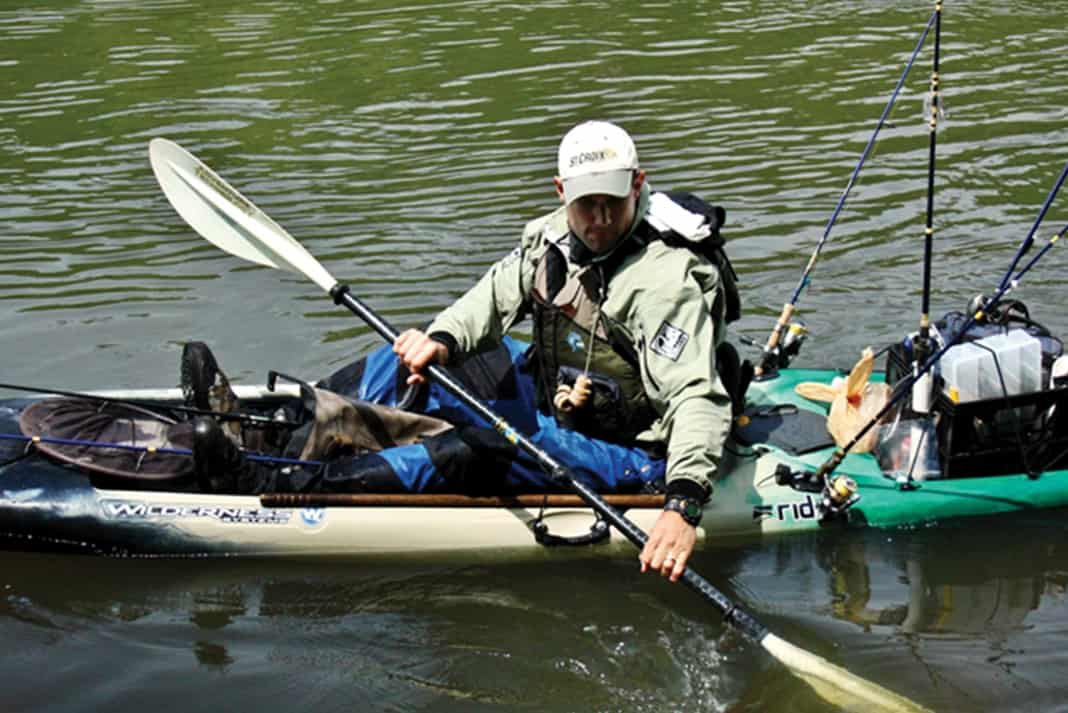
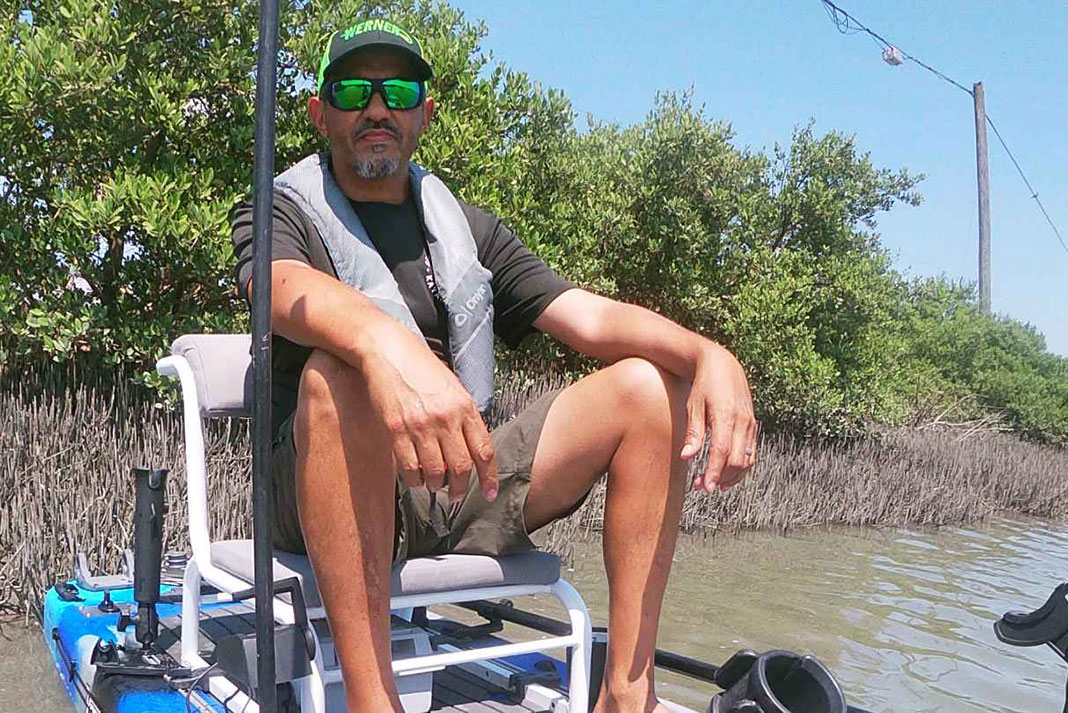
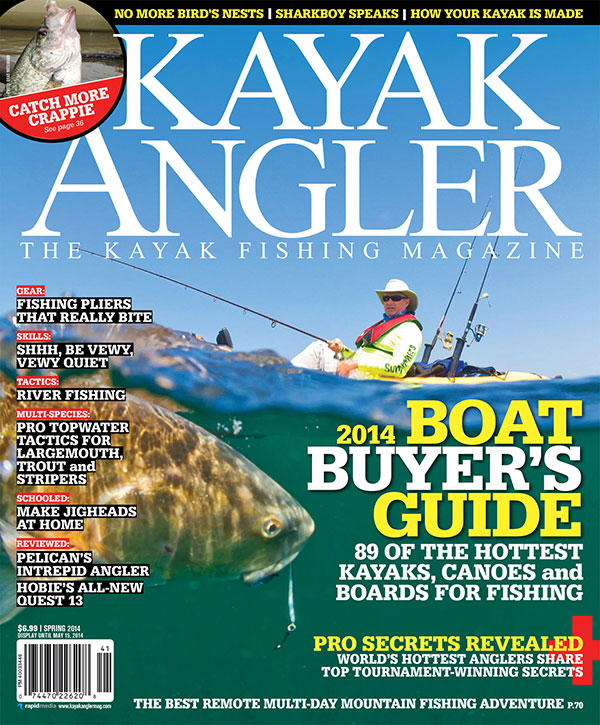

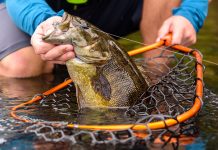
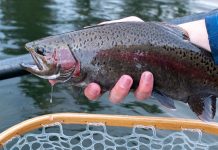
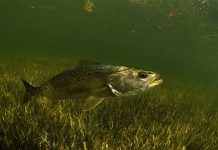


I like to get to my fishing spot SILENTLY… then tip and fall out. I have done this many times. It’s my favorite.